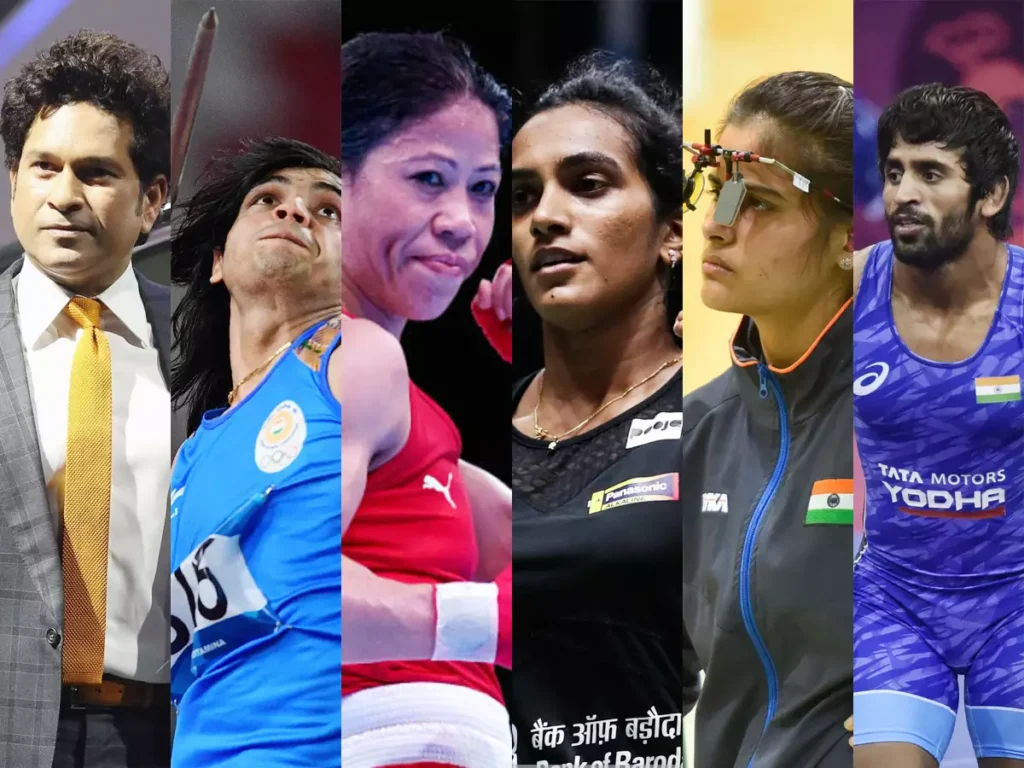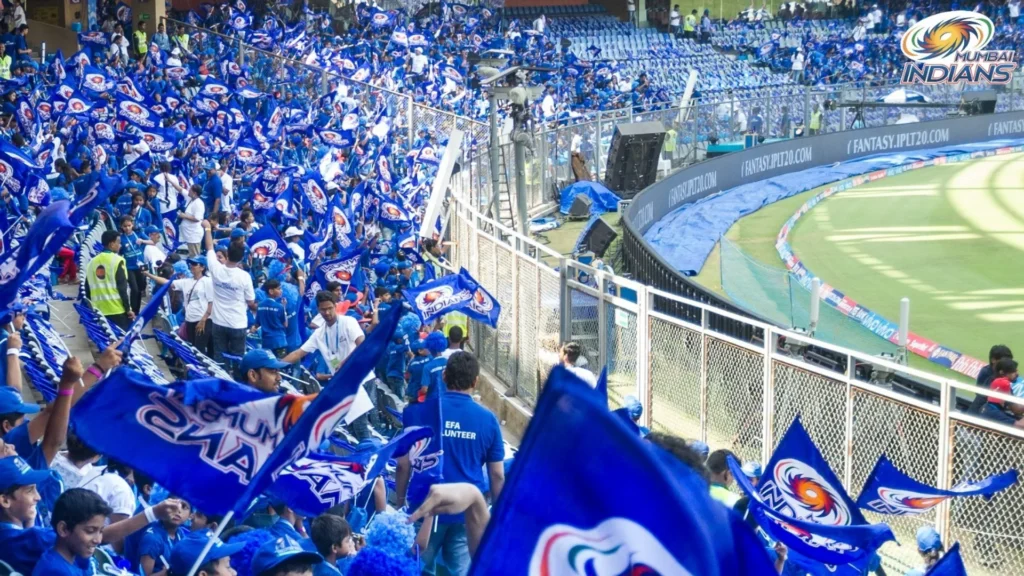Welcome to the fascinating world of sports marketing in India, a realm where every strategy plays out like a well-choreographed dance on a grand stage, where brands and athletes become inseparable from the fans’ psyche. Here, we unveil a guide that is not just a pathway but a journey through the thrilling avenues of Indian sports marketing. From the thunderous stadiums of the Indian Premier League to the adrenaline-fueled arenas of the Pro Kabaddi League, we invite you to explore the strategies that capture the spirit of a nation.
Our journey will take you through the intricacies of crafting a sports marketing plan that resonates with the Indian ethos. We will delve into the art of setting goals that echo the heartbeat of millions, analyze the diverse and vibrant audience that is as varied as the country itself, and unfold the key components that make a sports marketing plan not just effective, but extraordinary.
Understanding Sports Marketing
Sports marketing, especially in a diverse and vibrant country like India, is a multifaceted domain that involves promoting sports events, teams, and players, as well as using sports as a platform to promote various products and services. The essence of sports marketing lies in leveraging the passion and emotions that sports evoke among fans. Here, we’ll delve into the nuances of sports marketing in India, considering its unique cultural and demographic landscape.
In the simplest terms, sports marketing involves the application of marketing principles to the sports industry, as well as the use of sports as a tool to market other products and services. It’s a broad field that encompasses activities like sponsoring sports teams or events, endorsements by athletes, merchandising, and sports-related advertising.
The Indian Sports Landscape

The Indian sports scene is dominated by cricket, courtesy of leagues like the Indian Premier League (IPL), which has transformed not just the sport, but the entire sports marketing ecosystem in the country. However, other sports like football, badminton, hockey, and more recently, kabaddi, are also gaining significant traction. This diversification in sports popularity has opened new avenues for marketers.
In India, sports is more than just a game, it’s an emotion and a part of the cultural fabric. This emotional connect provides a powerful tool for marketers. For example, cricket is often considered a religion in India, and cricketers like Sachin Tendulkar or Virat Kohli are revered figures. Marketing campaigns that align with such emotional aspects tend to resonate more with the audience.
With India’s vast and growing internet user base, digital platforms have become a crucial part of sports marketing strategies. Social media, online streaming, and digital advertising campaigns play a significant role in engaging with younger and tech-savvy sports fans. The rise of fantasy sports platforms like Dream11 has also added a new dimension to sports engagement and marketing.
The power of sports in India has made athlete endorsements a key aspect of sports marketing. Brands align with athletes to capitalize on their popularity and credibility. For instance, Virat Kohli’s endorsement deals with brands like Audi and Puma leverage his status as a cricket icon to appeal to a wide consumer base.
Sports marketing in India also involves community engagement and promoting sports at the grassroots level. Initiatives like Reliance Foundation’s Young Champs program not only help in nurturing young talent but also build a community around sports, creating long-term engagement and loyalty.
The Indian sports marketing landscape is not without its challenges, including the over-reliance on cricket, regional disparities in sports popularity, and logistical issues. However, these challenges also present opportunities for innovative marketing strategies that can tap into unexplored markets and sports.
Setting Goals and Objectives in Sports Marketing

This process involves defining what you want to achieve through your marketing efforts and how you plan to measure success. In the context of the Indian sports industry, this step is crucial due to its diverse and passionate fan base.
Identifying Clear Goals
Your goals should be specific, measurable, achievable, relevant, and time-bound (SMART). For instance, a goal might be to increase the fan base of a local cricket team by 25% in the next year or to boost merchandise sales by 30% during the IPL season. These goals are specific (fan base increase, merchandise sales), measurable (25%, 30%), achievable (with the right strategies), relevant (to the business objectives), and time-bound (within a set period).
Aligning with Business Objectives
Every goal in your sports marketing plan should align with the broader objectives of your organization. If your company aims to increase brand visibility, your sports marketing goals might focus on brand placement during major sports events or leveraging athlete endorsements.
Diverse Objectives for a Diverse Audience
In India’s multifaceted sports landscape, objectives can vary significantly. For example, a sports brand might aim to target rural areas during local tournaments, while another might focus on urban youth through digital campaigns. Understanding your target audience is key to setting relevant objectives.
Objectives in Sports Marketing
- Enhancing brand visibility through sports sponsorships, such as a company sponsoring a popular badminton tournament.
- Increasing engagement through social media campaigns or interactive fan zones at sporting events.
- Boosting sales through targeted advertising campaigns during cricket matches or special merchandise releases.
- Entering new markets, like promoting football in regions traditionally dominated by cricket.
- Establishing a brand presence through community programs or local sports events to build goodwill.
It’s essential to periodically review and adjust your goals based on performance metrics and changing market dynamics. For instance, if a digital campaign is not yielding expected engagement rates, it may be necessary to revise the strategy or shift focus to more effective channels.
Mastering Target Audience Analysis in Sports Marketing

Target audience analysis is the strategic process of identifying and understanding the specific group of people most likely to engage with your sports product or service. This understanding is crucial for tailoring marketing strategies that resonate deeply with your audience, ultimately driving engagement and loyalty.
What is Target Audience Analysis?
Target audience analysis involves a deep dive into the demographics, psychographics, and behaviors of potential consumers. It’s not just about knowing who they are (age, gender, location) but also understanding their lifestyles, interests, values, and sports consumption habits.
How to Conduct Target Audience Analysis in Sports Marketing
- Identify basic information like age, gender, location, and income level. For instance, a sports brand in India might focus on the 18-35 age group, known for their sports fervor.
- Dive into the interests, attitudes, and opinions of your audience. Are they hardcore fans who follow every match, or casual viewers more interested in the social aspect of sports?
- Look at consumption patterns. How do they watch sports (Television, online streaming, live events)? What kind of merchandise do they prefer?
- Leverage data analytics tools to gather and analyze data from social media, websites, and other digital platforms.
- Directly engaging with the audience through surveys and feedback forms can provide valuable insights.
A prime example of effective target audience analysis is the IPL. By recognizing its diverse audience, IPL tailors its marketing strategies accordingly. They use regional languages in their promotions to connect with fans across different states and employ digital campaigns to engage the tech-savvy younger generation.
Key Components of a Sports Marketing Plan

Understanding and effectively implementing these elements can make a substantial difference in how a sports brand connects with its audience, sponsors, and stakeholders. Here’s an elaboration on these key components:
Strategic Partnerships and Sponsorships
- This involves collaborating with other brands or athletes to boost visibility and credibility.
- The partnership between the Indian Premier League (IPL) and major brands like PepsiCo and Vivo. These sponsorships not only enhance brand visibility but also create a synergy between the sport and the lifestyle of its fans.
Targeted Audience Engagement
- Identifying and engaging with specific demographic segments.
- Tailoring marketing strategies for cricket in urban areas, while focusing on kabaddi or wrestling in rural regions. Understanding regional preferences is key in a country as diverse as India.
Leveraging Digital Media
- Using online platforms for marketing.
- The Board of Control for Cricket in India (BCCI) utilizes platforms like Facebook and Twitter to stream live matches, post highlights, and engage with fans, thus enhancing the fan experience and reaching a wider audience.
Brand Integration and Promotion
- Seamlessly integrating the brand into sports content.
- Brands like Myntra and Flipkart sponsoring sports events or teams, thereby placing their brand in the midst of sports content consumed by millions.
Content Marketing
- Creating and distributing relevant and valuable content to attract and retain audiences.
- Creating behind-the-scenes content, player interviews, and match analyses, especially in popular sports like cricket and football, to keep fans engaged even off-season.
Event Marketing and Fan Experiences
- Enhancing the live experience for fans attending sports events.
- The Indian Super League (ISL) and IPL are known for their fan zones, live entertainment, and interactive sessions, making the match experience about more than just the sport.
Merchandising
- Selling branded sports merchandise.
- Teams like Chennai Super Kings and Mumbai Indians have a range of merchandise which fans purchase to show their support, turning them into brand ambassadors.
Community Engagement and CSR
- Engaging with the community and participating in corporate social responsibility activities.
- Many sports teams and athletes engage in community service and environmental initiatives, building a positive brand image and a deeper connection with the audience.
Performance Analytics and KPI Tracking
- Measuring the success of marketing strategies using various metrics.
- Analyzing social media engagement rates, merchandise sales, and viewership numbers to gauge the effectiveness of marketing campaigns.
Implementing the Plan in Sports Industry

Implementing a sports marketing plan is a crucial phase where strategic concepts are transformed into actionable reality. It’s about bringing your plan to life in the dynamic context of the Indian sports market. This segment delves into the key steps and considerations for effectively executing a marketing plan, ensuring that your strategies are not just theoretical but deliver real-world results.
Step-by-Step Execution
Resource Allocation and Management: Begin by allocating your resources, including budget, personnel, and technology, efficiently. For instance, if your campaign is digital-heavy, invest in social media management tools and skilled digital marketers.
Collaboration and Coordination: In the Indian sports industry, collaboration with various stakeholders – like sports teams, event organizers, and media agencies – is vital. A coordinated effort ensures a unified message and amplifies the impact of your marketing efforts.
Technology Integration: Utilizing technology, such as AI for data analysis or AR/VR for immersive fan experiences, can set your campaign sports apart. For example, integrating AR experiences in cricket matches can significantly enhance fan engagement.
Marketing Channels Optimization: Choose the right mix of marketing channels based on your target audience. In India, a combination of traditional media (like TV and Magazine) and digital platforms (like social media and online streaming) often works best.
Content Creation and Distribution: Tailor your content to resonate with the Indian audience. Use local languages, culturally relevant themes, and relatable sports icons to make your content more engaging.
Event Management and Promotion: If your plan includes event marketing, focus on seamless execution. From logistics to promotion, every aspect should align with your marketing objectives. For instance, hosting a cricket clinic with popular players can draw significant attention and press coverage.
Stakeholder Engagement: Engage continuously with sponsors, partners, and sports teams. Regular communication and alignment with their goals and expectations are critical for a successful implementation.
Compliance and Ethics: Ensure all marketing activities comply with legal standards and ethical norms, especially in a diverse and regulation-sensitive market like India.
Adapting to Market Dynamics
The Indian sports market is characterized by rapid changes and trends. Stay adaptable and be ready to modify your strategies in response to new developments, audience preferences, or competitive actions. Regularly monitor market trends and audience feedback to stay ahead of the curve.
Measuring Success and Making Adjustments
Implement a robust system to measure the effectiveness of your campaigns. Use metrics like engagement rates, conversion rates, and ROI to evaluate success. Be prepared to make data-driven adjustments to optimize your strategies continually.
Optimizing Sports Marketing Strategies: Measuring and Adjusting in Sports Industry

This process not only helps in understanding the impact of your efforts but also in refining your approach to stay ahead in a competitive market.
Key Metrics for Measurement
Social Media Engagement: This includes tracking likes, shares, comments, and follower growth on platforms like Facebook, Instagram, and Twitter. For instance, analyzing the social media buzz during an IPL match can provide insights into fan engagement and content effectiveness.
Ticket Sales and Attendance: For events like the Pro Kabaddi League or ISL matches, ticket sales provide direct feedback on the effectiveness of promotional activities.
Television and Online Viewership: Ratings from broadcasters and streaming platforms offer insights into the reach and popularity of the event or campaign.
Merchandise Sales: Sales figures for team jerseys, sports equipment, and other merchandise are tangible indicators of brand affinity and marketing success.
Sponsorship ROI: Assessing the return on investment for sponsors, including brand visibility and engagement, helps in understanding the value generated for partners.
Analyzing and Adjusting Strategies
Data-Driven Insights: Use data analytics tools to understand patterns and preferences among your audience. For example, if data shows a spike in viewership among younger audiences, you might focus more on digital and social media platforms for engagement.
Feedback Loops: Implement systems to gather feedback from fans, sponsors, and stakeholders. This feedback is invaluable for making adjustments to your marketing strategies.
Market Trends and Consumer Behavior: Stay updated with the latest trends in sports marketing and consumer behavior. Adapting to new technologies, like AR/VR experiences for sports events, can be a game-changer.
A/B Testing: Conduct A/B testing on different marketing campaigns to determine what works best. For instance, test two different ad copies on social media to see which generates more engagement.
Budget Re-allocation: Based on the performance metrics, reallocate your budget to more successful channels or strategies. For instance, if online campaigns are yielding better results than traditional advertising, it would be wise to shift more resources online.
Insightful Case Studies
Case Study 1: Mumbai Indians’ Fan Engagement Strategy

The Mumbai Indians, a prominent team in the Indian Premier League (IPL), have developed a robust fan engagement strategy that serves as an excellent example of effective sports marketing. Their approach includes:
Social Media Interaction: Regular updates, behind-the-scenes content, and interactive sessions with players have helped the team build a strong online community. This strategy not only keeps fans engaged during the season but also maintains interest during the off-season.
Merchandising: Leveraging their brand, Mumbai Indians have successfully marketed a wide range of team merchandise, which enhances brand visibility and creates a sense of belonging among fans.
Community Events: Hosting events like fan meets, charity matches, and cricket clinics have helped the Mumbai Indians to connect with their fanbase on a personal level, fostering loyalty.
Impact: This comprehensive approach has not only increased the team’s popularity but also significantly boosted its social media presence and merchandise sales.
Case Study 2: Puma’s Collaboration with Virat Kohli

Puma’s collaboration with Indian cricket star Virat Kohli is a shining example of celebrity endorsement in sports marketing. The key aspects of this partnership include:
Brand Ambassadorship: Kohli, with his massive fan following, has been the face of Puma in India. His influence has been pivotal in enhancing the brand’s visibility and appeal, especially among the youth.
Exclusive Product Lines: The launch of exclusive Virat Kohli-branded merchandise by Puma, including apparel and footwear, has capitalized on his popularity.
Marketing Campaigns: Featuring Kohli in various marketing campaigns, Puma has effectively communicated its brand values of performance and resilience, resonating well with the sports-centric audience.
Impact: This partnership has significantly increased Puma’s market share in India, demonstrating the power of aligning with a sports icon that embodies a brand’s ethos.
FAQs
How do you write a sports marketing plan?
Writing a sports marketing plan involves several key steps. Initially, you should identify your marketing goals and define your target audience. Conduct thorough market research to understand the landscape, including an analysis of competitors. Develop a unique selling proposition (USP) to differentiate your team, event, or brand. Your plan should include a mix of marketing strategies, which may encompass digital marketing, event promotions, sponsorship deals, and more. It’s crucial to set a realistic budget for your marketing activities. Once the plan is implemented, ongoing monitoring and adjustments based on performance metrics and audience feedback are essential for success.
What are the 4 components in a sports marketing plan?
A comprehensive sports marketing plan is typically built around four fundamental components. The first is Market Research, which involves gaining a deep understanding of the market, competitors, and audience demographics. Strategic Planning follows, where you define clear objectives, identify your target audience, and craft a unique selling proposition (USP). The Marketing Mix is the third component, requiring the development of a balanced strategy that includes product, price, place, and promotion, all tailored specifically for the sports industry. The final component is Implementation and Evaluation, which involves executing the marketing plan and continuously assessing its effectiveness through measurable outcomes.
What are the 10 sport marketing steps?
The process of sports marketing can be broken down into 10 key steps. It starts with defining clear, measurable objectives. Next is the identification of the target audience, followed by a thorough market analysis. Conducting a SWOT analysis to assess strengths, weaknesses, opportunities, and threats is crucial. The fifth step involves developing diverse marketing strategies that span digital, traditional, and experiential marketing realms. Budget planning comes next, ensuring financial resources are allocated effectively. An action plan details the execution steps of the marketing activities. Forming partnerships and securing sponsorships is also vital. The marketing plan is then launched, and its performance is continuously monitored, with adjustments made as necessary.
What are the 3 types of sports marketing?
Sports marketing can be categorized into three distinct types. Marketing of Sports focuses on promoting specific sports, teams, or events to enhance fan engagement and generate revenue. Marketing through Sports uses the platform of sports to market products or services that may be unrelated to the sport itself. Lastly, Grassroots Sports Marketing is centered around local or community-level sports initiatives, aiming to drive engagement and participation at the grassroots level.





